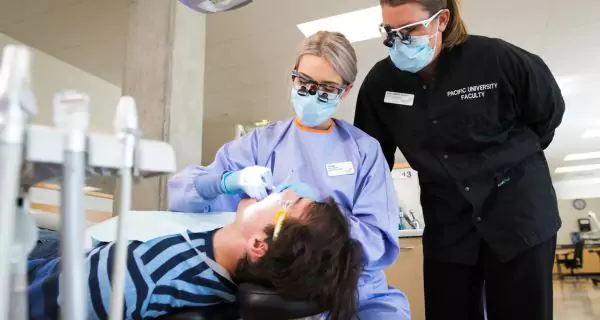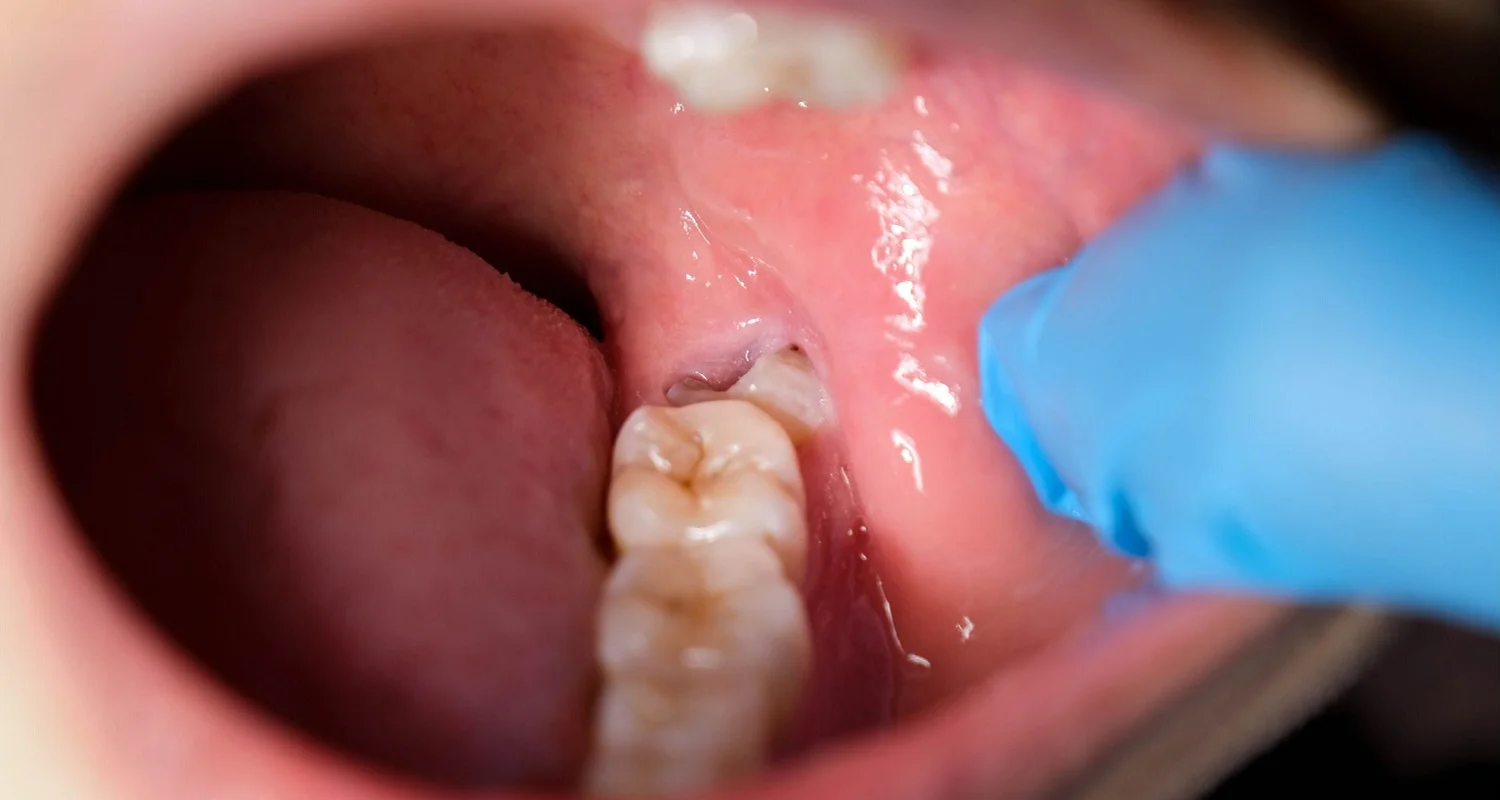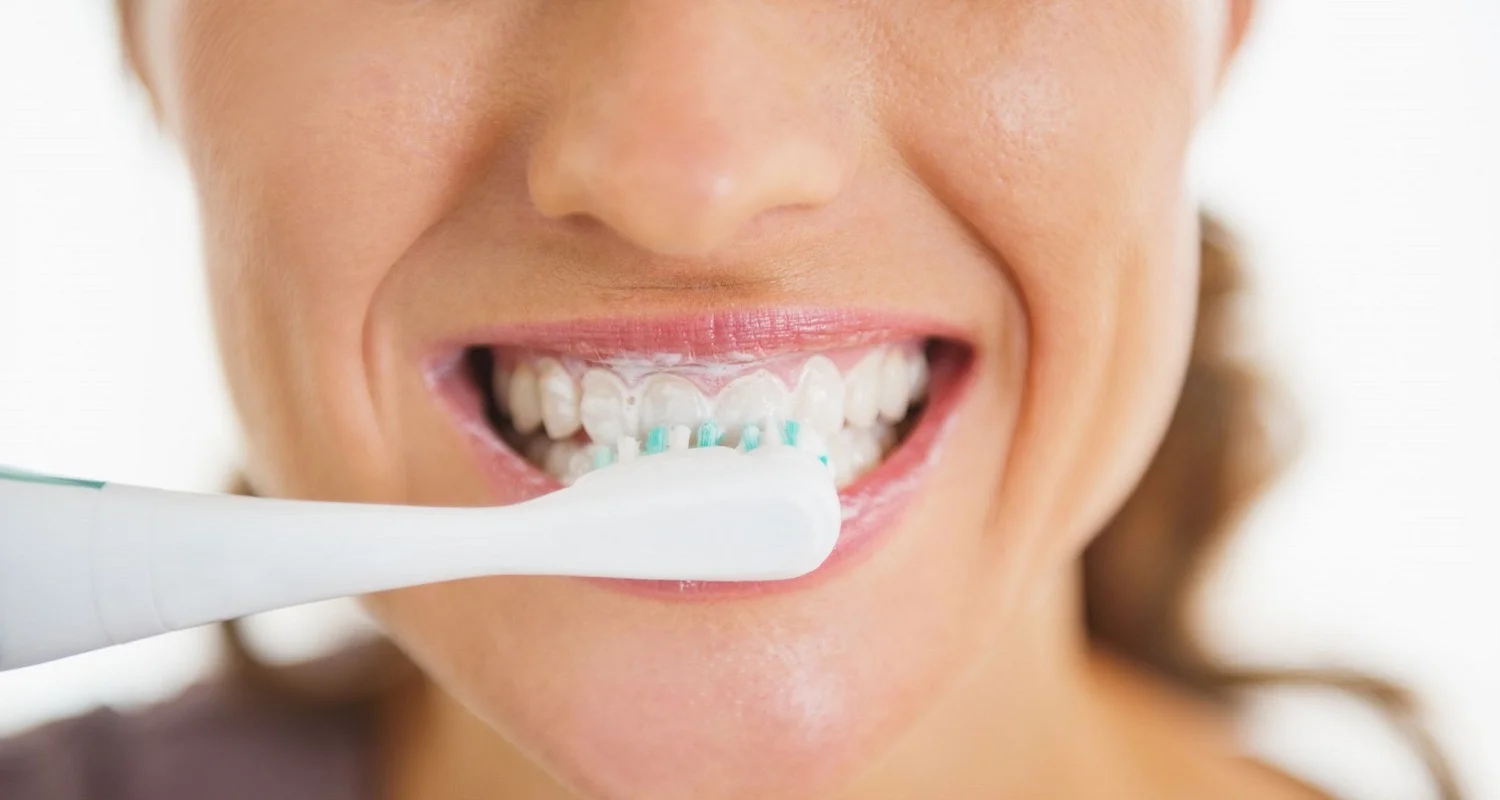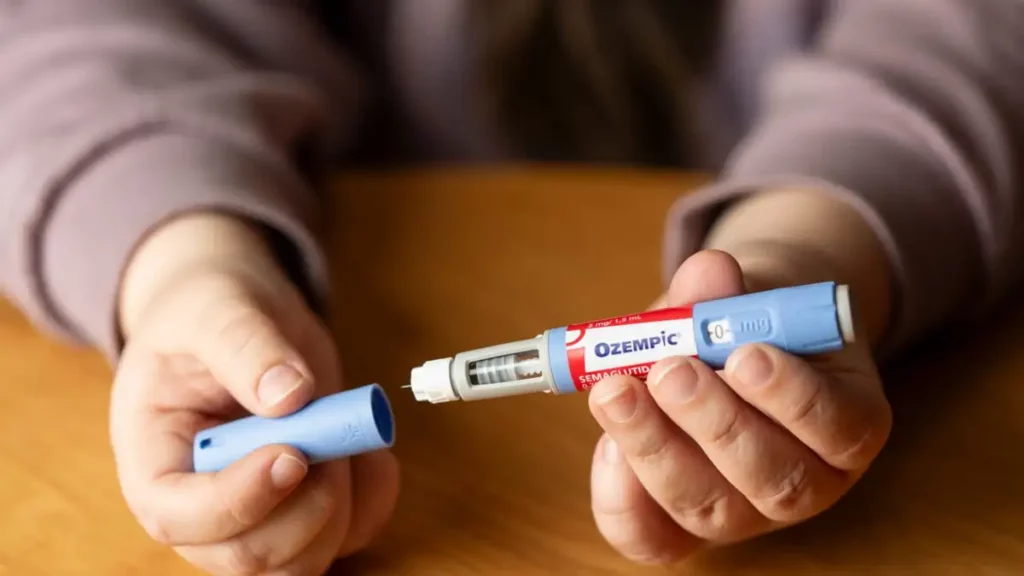Last Updated on: 19th September 2025, 12:49 pm
What to do with food stuck in wisdom tooth hole? In the days following surgery, it is very likely that food particles will be deposited there. The extraction of wisdom teeth leaves a hole in the gum, specifically in the place that the tooth occupied.
When wisdom teeth do not have sufficient space in the dental system or emerge in the wrong position, the dentist will recommend removing them.
Wisdom teeth extraction is a surgical procedure performed by an oral surgeon. After the intervention, a blood clot forms over the hole left by the extracted tooth.
It is part of the healing process, which can take several days. In the postoperative stage, care is necessary to facilitate healing, during which time particles of food may be deposited in the holes at the extraction site.
The remains of food stuck in the hole of the extracted wisdom tooth is a common situation that – in some cases – can cause inflammation and discomfort in the gum.
In addition, after the gum has healed, a hole may remain where the tooth was, making it easier for food remains to settle there.
How to Avoid Getting Food Stuck in Wisdom Tooth Hole?
To prevent food from getting stuck in a wisdom tooth hole, in the days following surgery, it is necessary to take care:
Soft food diet
Crunchy or chewy foods should be avoided. It is also recommended not to consume acidic or spicy foods since they can dissolve the blood clot. It is appropriate to choose a diet of soft foods: broths, shakes, noodles, scrambled eggs, mashed potatoes, or yogurt, among others.
It is recommended not to eat small foods such as rice and seeds. You should not consume hot or acidic drinks, chewing gum, meat, strawberries, blackberries, corn, nuts, popcorn, whole grains, or toasted bread.
Do not chew in the area near the hole
Chew food on the other side of the mouth. If several wisdom teeth were removed, eating may be difficult. Request the guidance of the oral surgeon who performed the intervention.
Mouth rinses
After each meal, a gentle mouth rinse should be done with a mixture of water and salt. This will help remove food particles and kill any bacteria.
Recommendations for Self-care
After the surgical extraction of wisdom teeth, it is appropriate to take care of recovery.
• Increase fluid intake: This keeps the mouth moist, which keeps clots in place and speeds recovery. However, do not drink sodas or carbonated drinks since they can weaken the clots.
• Avoid suction: Any activity that involves sipping/absorbing/sucking can cause a dry socket, with the consequence of losing the blood clot that covers the hole, exposing the bone and tissue.
• Do not drink alcohol: Alcohol consumption can interfere with recovery, causing more swelling and pain. It can also counter the effect of painkillers and other medications that are part of the post-surgery treatment.
How can the Wisdom Tooth Extraction Site be Cleaned?
The initial recommendation is not to try to remove food residue with your fingers, tongue, or any sharp, non-sterile instrument. This can affect the blood clot and disrupt the healing process.
Available include the following:
1. Cotton applicator
A cotton swab or similar applicator will clean the area with gentle movements. It is recommended to do this cleaning one week after surgery, so as not to interfere with the healing process.
2. A syringe filled with warm water
A sterile syringe is filled with room temperature or lukewarm water. The nozzle of the syringe is held over the hole in the tooth and the area is gently irrigated.
3. Brush the area
With a soft-bristled toothbrush, gentle sweeps can be made over the space of the tooth hole. It is recommended to apply this procedure a week after the extraction of the wisdom tooth to allow time for the gums to heal.
4. Warm water rinses with saline
Mix a teaspoon of salt in a glass of warm water and mix. Take a little of the solution and make gentle swishing movements, especially in the area of the wisdom tooth hole. Be careful not to burst the blood clot. The rinse is then discarded. Repeat the rinse at least three times a day.
5. Rinse with herbal tea
This alternative helps with inflammation. Some herbs known for their anti-inflammatory properties are chamomile, turmeric, and green tea. You can also use coconut oil or oregano oil. Rinses are done with lukewarm water, three times a day.
When Should You See the Dentist?
After the intervention for the extraction of the wisdom tooth, the gum requires between 4 and 6 weeks to heal completely.
Consult your dentist if any of the following situations occur:
• Collection of pus and oozing
• Any sign of infection or dry socket
• After 3 days of surgery, there is swelling
• Stabbing pain 2 days after the intervention
• Numbness
• Excessive bleeding
• High fever
• Palpitations and tingling
• Unpleasant or sour taste.
• Bad breath is perceived after 3 days
Following the recommendations for diet and care in the days after the extraction of the wisdom tooth, in combination with oral prophylaxis in removing food stuck in the wisdom tooth hole, will allow the site to close successfully.
In the event of an adverse recovery situation, the treating dentist should be consulted as soon as possible to indicate the procedure to follow that will stabilize the oral health condition.
Frequently Asked Questions
Is there a downside to mewing?
While mewing is a popular technique for facial restructuring, it’s important to be aware of potential risks associated with improper practice. Here’s what can go wrong with mewing:
● Misaligned Teeth: If you force your tongue into an unnatural position, it can disrupt the alignment of your teeth over time.
● Worsened Bite Problems: For those with existing bite issues, mewing done incorrectly could exacerbate these problems.
● Speech Difficulties: Improper tongue posture can lead to speech difficulties.
● Need for Corrective Treatment: The complications caused by mewing mistakes might require corrective treatment from a dentist or orthodontist, which can be time-consuming and expensive.
Can mewing cause problems?
While mewing is a popular practice, there are potential risks involved, especially if done excessively or incorrectly. Here’s a key concern:
TMJ Issues: Mewing, particularly when overdone or done with improper technique, can put undue stress on the temporomandibular joint (TMJ). This can lead to pain, difficulty moving your jaw, and even a clicking sound when opening or closing your mouth. TMJ disorders can be uncomfortable and may require medical or dental intervention to address.
Is mewing just a facial exercise, or can it be rude?
Mewing, originally intended for facial sculpting, has taken a new turn. Students are using it as a dismissive gesture in classrooms, avoiding participation in discussions.
Am I doing mewing correctly?
Mewing involves positioning your tongue in a specific way against the roof of your mouth, aiming for facial changes over time. Here’s how to tell if your technique might be off:
● Tongue Tension: Ensure your tongue is relaxed. If you’re straining or forcing it into position, you’re likely not mewing correctly.
● Incomplete Contact: Proper mewing involves the entire tongue, including the back, making contact with the roof of your mouth. If any part of your tongue isn’t touching, your technique might need adjustment.
Since it can be difficult to feel the exact positioning in your mouth, consider consulting a dentist or orthodontist familiar with mewing for guidance. They can assess your technique and ensure you’re doing it safely and effectively.
Share:
References
1. Burgess, Lana (November 5, 2020). How can I relieve wisdom teeth pain? https://www.medicalnewstoday.com/articles/es/dolor-en-la-muela-del-juicio
2. MedlinePlus (November 30, 2020), Dry socket / https://medlineplus.gov/spanish/ency/patientinstructions/000780.htm
3. Nova Scotia Health Authority (2020) After Dental Extractons or Wisdom Teeth Removal / https://www.nshealth.ca/sites/nshealth.ca/files/patientinformation/0646.pdf
4. Sissons, Claire (December 13, 2021) How long does it take to recover from a wisdom tooth extraction? / https://www.medicalnewstoday.com/articles/es/tiempo-de-recuperacion-de-extraccion-de-muelas-del-juicio
5. Whelan, Corey (Enero 7 de 2021) 8 Tips to Remove Food Stuck in Wisdom Tooth Hole / https://www.healthline.com/health/food-stuck-in-wisdom-tooth-hole
-
Nayibe Cubillos M. [Author]
Pharmaceutical Chemestry |Pharmaceutical Process Management | Pharmaceutical Care | Pharmaceutical Services Audit | Pharmaceutical Services Process Consulting | Content Project Manager | SEO Knowledge | Content Writer | Leadership | Scrum Master
View all posts
A healthcare writer with a solid background in pharmaceutical chemistry and a thorough understanding of Colombian regulatory processes and comprehensive sector management, she has significant experience coordinating and leading multidisciplina...




















